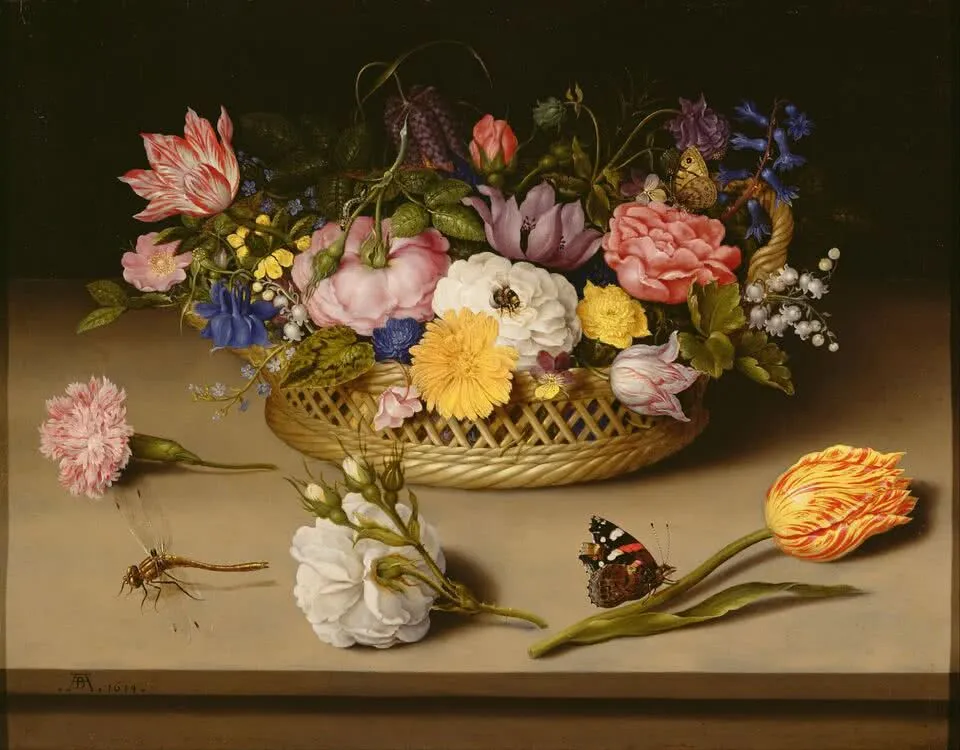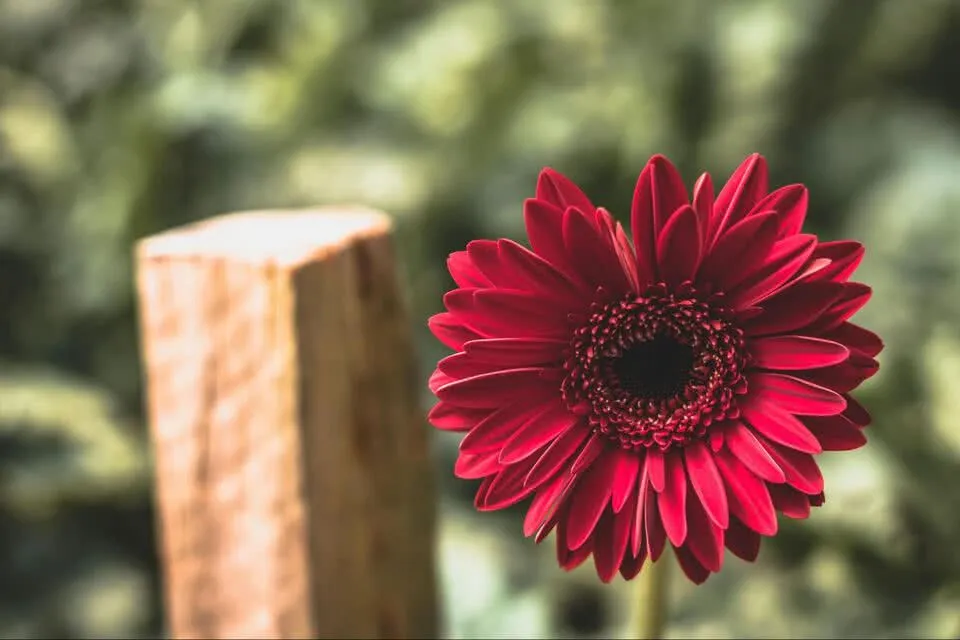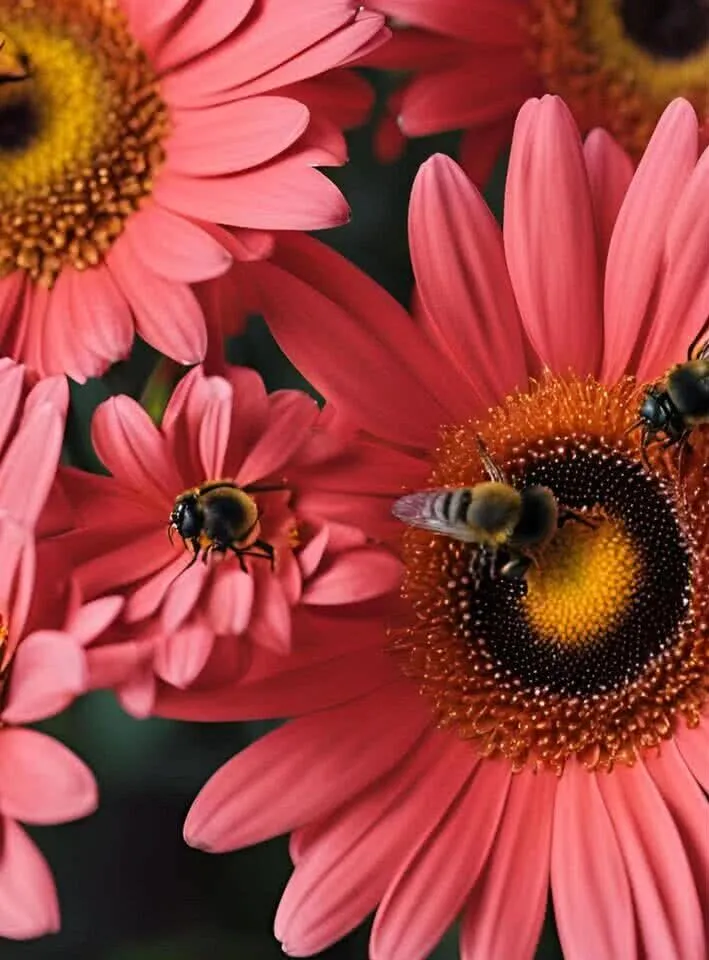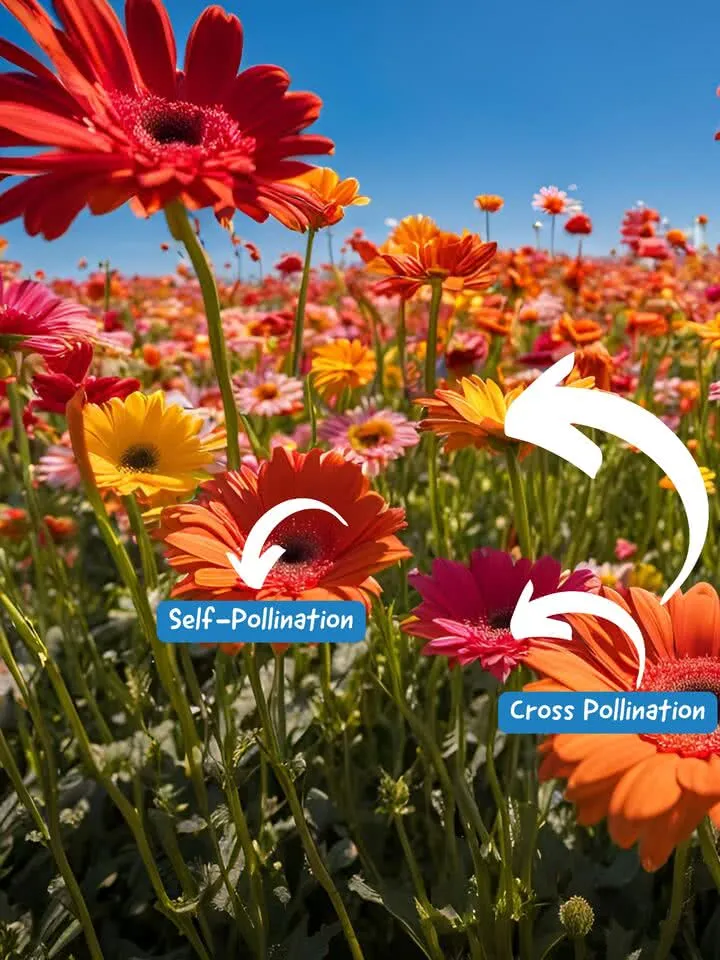Gerbera Daisies
Gerbera daisies are cheerful, colorful flowers and the perfect flower to draw inspiration from. Gerberas belong to the Asteraceae family, a large plant family that includes sunflowers, chrysanthemums, and… lettuce! Yes, even your salad greens are part of this family. The defining feature of this family is the composite flower head, and we’ll discuss what this is in a moment!

Gerberas are native to South Africa and Madagascar, but they are now grown all over the world. They come in a wide variety of colors, including red, orange, yellow, pink, purple, and white, and have a long blooming season, from Spring to Fall. They are also a popular choice for flower gardens, because they are deer-resistant and drought-tolerant.
Flowers Through the Artist’s Eye: A History in Still Life
Why were Gerberas selected for our Watercolor Pencils Art Box? Flowers have long held a place of honor in the world of still life art, symbolizing beauty, fragility, and the fleeting nature of time.
Early Influences
The tradition of depicting flowers in still life can be traced back centuries. Ancient Egyptian tomb paintings often featured floral motifs, symbolizing life and rebirth. During the Renaissance, flowers took center stage in still life paintings, particularly in the works of Dutch and Flemish masters. These artists meticulously rendered floral arrangements, showcasing their skill in capturing the intricate details and textures of various blooms.

A Closer Look at the Gerbera Daisy
There’s more to these sunny flowers than meets the eye. Their unique anatomy and composite structure make them a captivating subject for nature enthusiasts and artists! At first glance, a gerbera daisy might seem like a simple flower, but its form is surprisingly complex and unique.
Here’s the cool part: it’s not a one-flower bloom, it’s hundreds! What we perceive as a single flower is actually a composite flower head, made of hundreds of tiny individual flowers called florets. These florets are clustered together on a receptacle, which is the platform that holds all those tiny florets.
There are two main types of florets in a gerbera daisy:
- Trans and ray florets: These are the middle and outermost florets that resemble petals. They come in a wide array of vibrant colors, attracting pollinators with their showy display.
- Disc florets: These are the tiny, tubular flowers in the center of the flower head. They are often yellow or dark in color and are responsible for the reproductive functions of the daisy.


Why This Matters for the Plant
This design is all about survival! By having so many florets clustered together, the gerbera daisy:
-
Attracts more pollinators: More “flowers” mean more visual impact to catch the eye of bees, butterflies, and other helpful creatures.
-
Increases pollination chances: With so many disc florets, there’s a higher likelihood of successful pollination and seed production.
-
Provides a landing pad: The flat flower head gives pollinators a convenient place to land and do their work.
This composite structure is what sets gerbera daisies apart from many other flowers. It’s a clever evolutionary strategy that maximizes their chances of pollination by providing a landing platform and abundant nectar and pollen for visiting insects!
So, next time you see a gerbera daisy, remember it’s a tiny community of flowers working together in a remarkable way!
How Do Gerberas Pollinate?
Gerbera daisies have a fascinating pollination process, thanks to their unique structure. Remember how we talked about those hundreds of tiny florets? They play a key role! Here’s how it works. The brightly colored ray florets act like beacons, signaling to bees, butterflies, and other insects that there’s a feast waiting for them. When a pollinator lands on the flower head, it brushes against the disc florets in the center.

These tiny florets contain both male (pollen-producing) and female (pollen-receiving) parts. As the pollinator moves from floret to floret, collecting nectar and pollen, it inadvertently picks up the sticky pollen grains on its body. When the pollinator visits another gerbera daisy, some of the pollen it’s carrying gets deposited on the stigma (the female part) of the disc florets. This cross-pollination is essential for fertilization and seed production.
While gerbera daisies primarily rely on cross-pollination, they can also self-pollinate. This means pollen from one floret can fertilize another floret on the same flower head. However, cross-pollination generally leads to greater genetic diversity and healthier offspring.

Alright, artists, that wraps up our exploration of gerbera daisies and their place in the world of still life. Now it’s your turn! Grab your art supplies, find a gerbera daisy to observe (or use your imagination!), and see how you can capture its unique beauty and intricate form in your own artwork. Happy creating and be sure to grab a watercolor pencil gerbera box to delve deeper!
Want to read this offline? Feel free to print this post for offline reading!